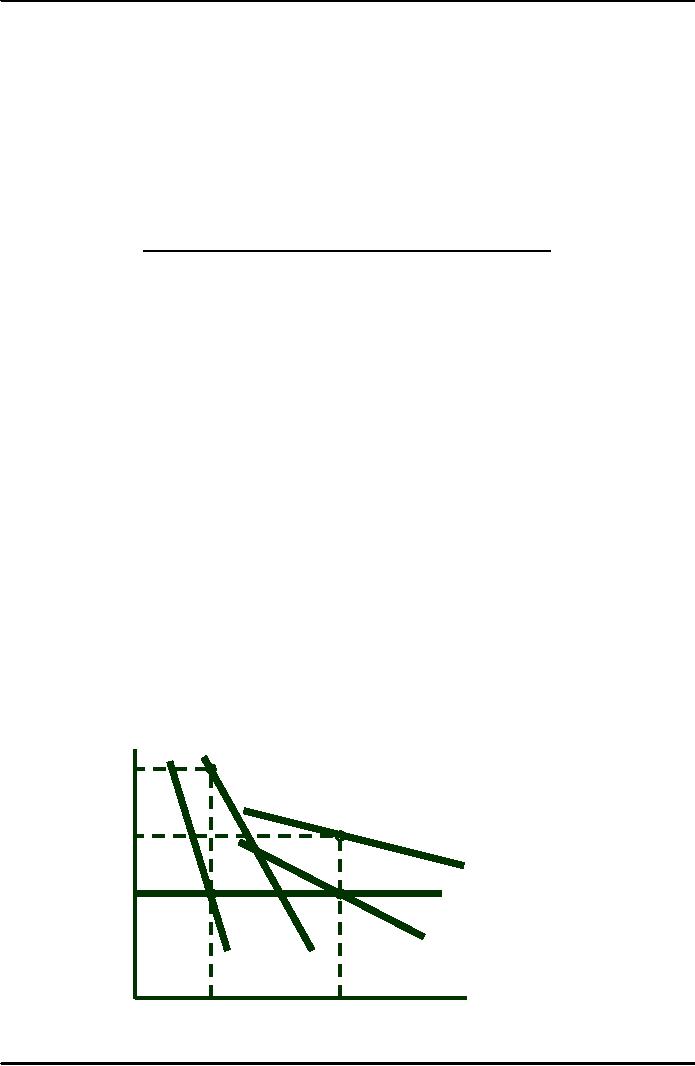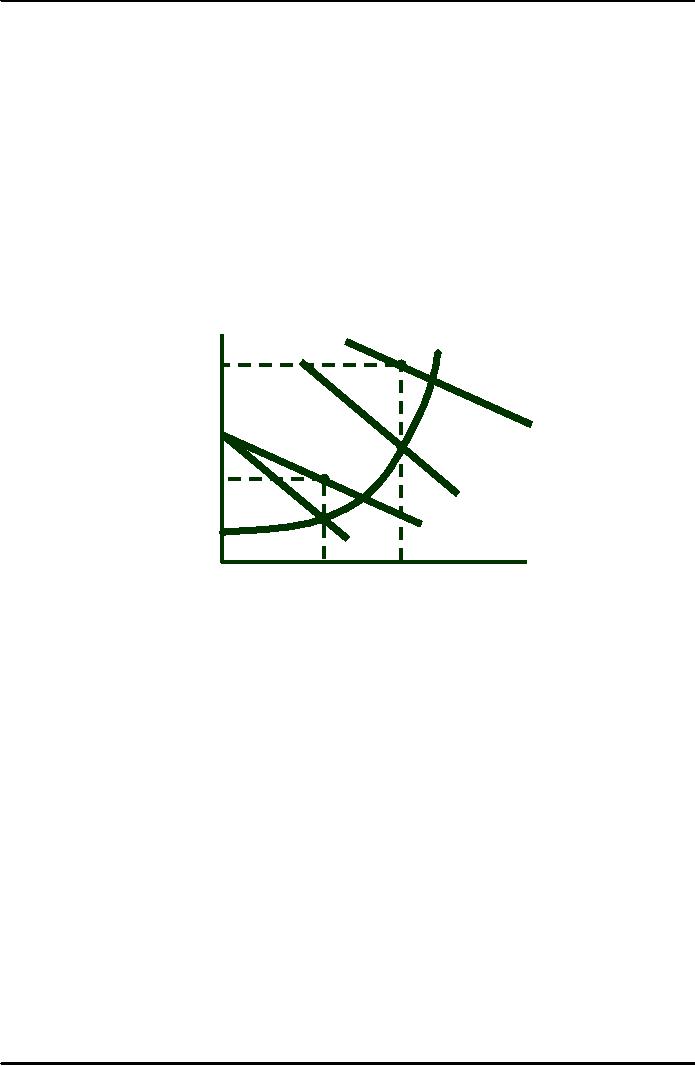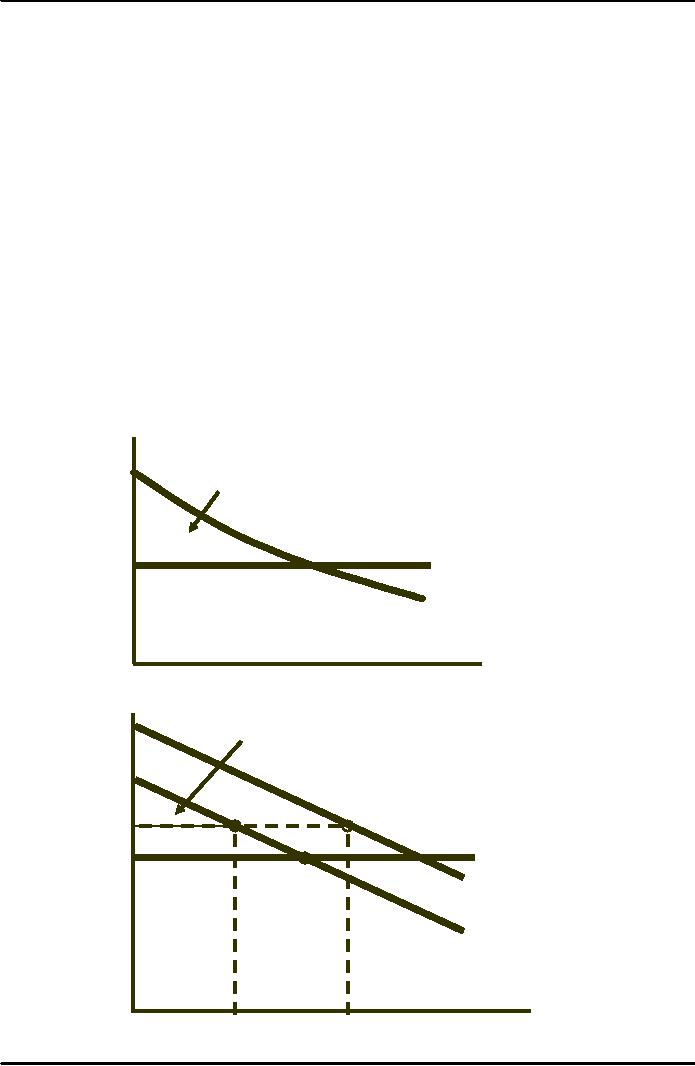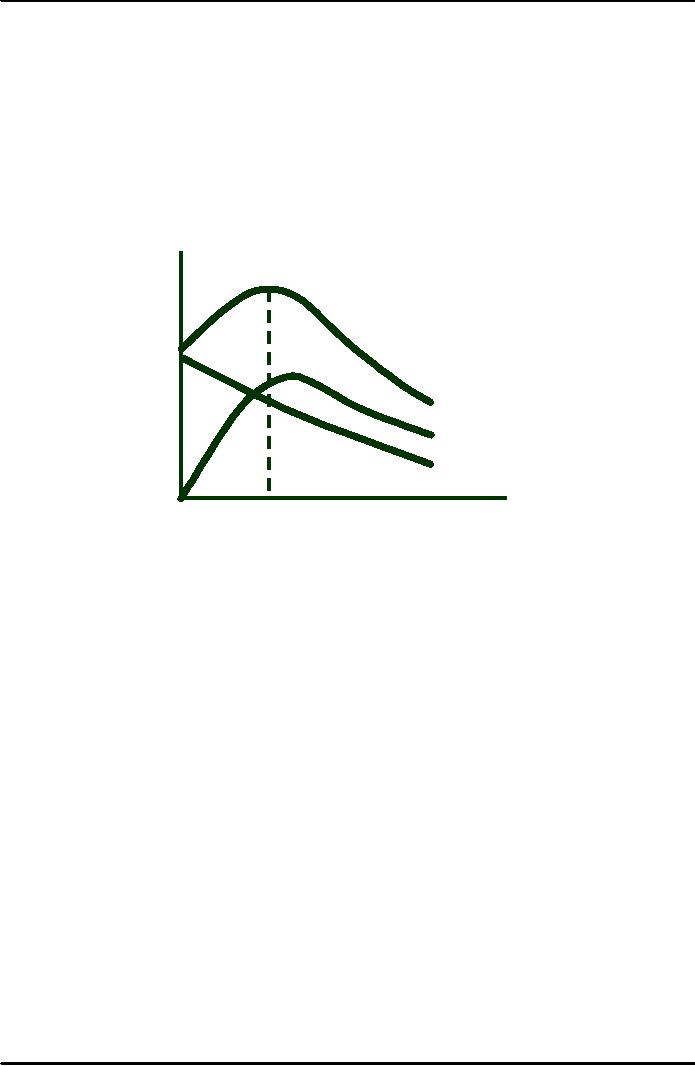 |
Airline Fares:Elasticities of Demand for Air Travel, The Two-Part Tariff |
| << Monopsony Power:THE ECONOMICS OF COUPONS AND REBATES |
| Bundling:Consumption Decisions When Products are Bundled >> |

Microeconomics
ECO402
VU
Lesson
36
Airline
Fares
Differences
in elasticities imply that
some customers will pay a
higher fare than
others.
Business
travelers have few choices
and their demand is less
elastic.
Casual
travelers have choices and
are more price
sensitive.
Elasticities
of Demand for Air
Travel
Elasticity
First-Class
Economy
Plus Economy
Price
-0.3
-0.4
-0.9
Income
1.2
1.2
1.8
The
airlines separate the market
by setting various restrictions on
the tickets.
Less
expensive: notice, stay over
the weekend, no
refund
Most
expensive: no restrictions
Intertemporal
Price Discrimination and
Peak-Load Pricing
Separating
the Market With
Time
Initial
release of a product, the
demand is inelastic
Book
Movie
Computer
Once this
market has yielded a maximum
profit, firms lower the
price to appeal to a
general
market with a more elastic
demand
Paper
back books
Dollar
Movies
Discount
computers
Consumers
are divided
$/Q
into
groups over
Over
time, demand
time.Initially,
demand becomes more
elastic
P1
is
less elastic resulting and
price is reduced
in
a price of P1 .
to
appeal to the mass
market.
P2
D2 =
AR2
AC
= MC
MR2
D1 =
AR1
MR1
Q1
Q2
Quantity
167

Microeconomics
ECO402
VU
Peak-Load
Pricing
Demand for
some products may peak at
particular times.
Rush
hour traffic
Electricity
- summer season
Restaurants
on weekends
Capacity
restraints will also
increase MC.
Increased MR
and MC would indicate a
higher price.
MR is not
equal for each market
because one market does
not impact the other
market.
$/Q
MC
Peak-load
price
= P1 .
P1
D1 =
AR1
Off-
load
price
= P2 .
P2
MR1
D2 =
AR2
MR2
Q
Q
Quantity
How
to Price a Best Selling
Novel
What
Do You Think?
1)
How would you arrive at
the price for the
initial release of the
hardbound
edition
of a book?
2)
How long do you wait to
release the paperback
edition? Could the
popularity
of the book impact your
decision?
3)
How do you determine the
price for the paperback
edition?
The
Two-Part Tariff
The
purchase of some products
and services can be
separated into two
decisions, and
therefore,
two prices.
Examples
1)Amusement
Park
Pay
to enter
Pay
for rides and food
within the park
168

Microeconomics
ECO402
VU
2)Tennis
Club
Pay
to join
Pay
to play
3)
Safety Razor
Pay
for razor
Pay
for blades
4)
Polaroid Film
Pay
for the camera
Pay
for the film
Pricing
decision is setting the
entry fee (T) and
the usage fee
(P).
Choosing
the trade-off between
free-entry and high use
prices or high-entry and
zero use
prices.
Two-Part
Tariff with a Single
Consumer
$/Q
Usage
price P*is
set
where
T
MC
= D. Entry price T*
is
equal to the entire
consumer
surplus.
M
P
D
Quantity
The
price, P*,
will
be
T*
$/Q
greater
than MC. Set T*
at
the surplus value of D2.
ö
= 2T * +
(P* -
MC)
x(Q1 +
Q2 )
A
ö
more
than twice ABC
P*
MC
B
C
D1 = consumer
1
D2 = consumer
2
Quantity
Q2
Q1
169

Microeconomics
ECO402
VU
Two-Part
Tariff with Two
Consumers
The
Two-Part Tariff With Many
Different Consumers
No exact
way to determine P* and
T*.
Must
consider the trade-off
between the entry fee
T*
and the use fee
P*.
Low
entry fee: High sales
and falling profit with
lower price and more
entrants.
To find
optimum combination, choose
several combinations of P,T.
Choose
the combination that
maximizes profit.
ö
=öa
+ös
=n(T)T
+(P-MCQ(n)
)
Profit
n=entrants
Total
profit is the sum of
the
profit
from the entry fee
and
the
profit from sales.
Both
depend
on T.
ö
Total
öa: entry
fee
öS:
sales
T
T*
Rule
of Thumb
Similar
demand: Choose P
close
to MC and high T
Dissimilar
demand: Choose high
P
and
low T.
Two-Part
Tariff With A Twist
Entry
price (T)
entitles
the buyer to a certain
number of free units
Razors
with several blades
Amusement
parks with some
tokens
On-line
with free time
170
Table of Contents:
- ECONOMICS:Themes of Microeconomics, Theories and Models
- Economics: Another Perspective, Factors of Production
- REAL VERSUS NOMINAL PRICES:SUPPLY AND DEMAND, The Demand Curve
- Changes in Market Equilibrium:Market for College Education
- Elasticities of supply and demand:The Demand for Gasoline
- Consumer Behavior:Consumer Preferences, Indifference curves
- CONSUMER PREFERENCES:Budget Constraints, Consumer Choice
- Note it is repeated:Consumer Preferences, Revealed Preferences
- MARGINAL UTILITY AND CONSUMER CHOICE:COST-OF-LIVING INDEXES
- Review of Consumer Equilibrium:INDIVIDUAL DEMAND, An Inferior Good
- Income & Substitution Effects:Determining the Market Demand Curve
- The Aggregate Demand For Wheat:NETWORK EXTERNALITIES
- Describing Risk:Unequal Probability Outcomes
- PREFERENCES TOWARD RISK:Risk Premium, Indifference Curve
- PREFERENCES TOWARD RISK:Reducing Risk, The Demand for Risky Assets
- The Technology of Production:Production Function for Food
- Production with Two Variable Inputs:Returns to Scale
- Measuring Cost: Which Costs Matter?:Cost in the Short Run
- A Firmís Short-Run Costs ($):The Effect of Effluent Fees on Firmsí Input Choices
- Cost in the Long Run:Long-Run Cost with Economies & Diseconomies of Scale
- Production with Two Outputs--Economies of Scope:Cubic Cost Function
- Perfectly Competitive Markets:Choosing Output in Short Run
- A Competitive Firm Incurring Losses:Industry Supply in Short Run
- Elasticity of Market Supply:Producer Surplus for a Market
- Elasticity of Market Supply:Long-Run Competitive Equilibrium
- Elasticity of Market Supply:The Industryís Long-Run Supply Curve
- Elasticity of Market Supply:Welfare loss if price is held below market-clearing level
- Price Supports:Supply Restrictions, Import Quotas and Tariffs
- The Sugar Quota:The Impact of a Tax or Subsidy, Subsidy
- Perfect Competition:Total, Marginal, and Average Revenue
- Perfect Competition:Effect of Excise Tax on Monopolist
- Monopoly:Elasticity of Demand and Price Markup, Sources of Monopoly Power
- The Social Costs of Monopoly Power:Price Regulation, Monopsony
- Monopsony Power:Pricing With Market Power, Capturing Consumer Surplus
- Monopsony Power:THE ECONOMICS OF COUPONS AND REBATES
- Airline Fares:Elasticities of Demand for Air Travel, The Two-Part Tariff
- Bundling:Consumption Decisions When Products are Bundled
- Bundling:Mixed Versus Pure Bundling, Effects of Advertising
- MONOPOLISTIC COMPETITION:Monopolistic Competition in the Market for Colas and Coffee
- OLIGOPOLY:Duopoly Example, Price Competition
- Competition Versus Collusion:The Prisonersí Dilemma, Implications of the Prisoners
- COMPETITIVE FACTOR MARKETS:Marginal Revenue Product
- Competitive Factor Markets:The Demand for Jet Fuel
- Equilibrium in a Competitive Factor Market:Labor Market Equilibrium
- Factor Markets with Monopoly Power:Monopoly Power of Sellers of Labor